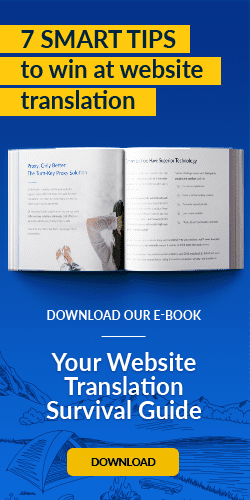Google Translate is a seemingly handy tool for content translation. After all, it’s free, readily available, and created by one of the Internet’s leading innovators.
But ironically, Google’s own machine translation solutions fall short in one critical area: search engine optimization.
You already know how important SEO is for your flagship site, but it’s equally important—perhaps even more so—as you’re establishing multilingual sites in international markets. You need your products, services and messages to be discovered, so it’s critical that your translated content be found by the search engines first.
So why isn’t Google Translate enough?
Machine Translated Content Penalties
Google’s own quality guidelines penalize the search engine rankings of websites that use automated content. This includes “text translated by an automated tool without human review or curation before publishing,” Google says. By definition, that includes Google Translate.
So if you’re using a pure machine-translation solution to present content in multiple languages on your site, you run the risk of Google itself penalizing the site for doing so. Lower search engine rankings can be crippling to companies that are looking to establish brand credibility and presence in new and unfamiliar global markets.
Lack of Clear Localized Architecture
Google also has pretty stringent quality standards for website architecture. That includes localized or translated websites.
This means that it should be clear to your visitors—and all search engines—how your localized content is built and organized so it’s easy to find, easy to navigate and easy to understand.
Here’s the problem: Machine translation solutions like Google Translate can make that hard to do since they don’t actually create a “home” for translated content on your site. By simply skinning translated words over your existing content, machine translators avoid creating clear site architectures and sitemaps for content in multiple languages.
This can confuse the search engines, and result in your content never being indexed, ranked or displayed in search results.
Translation Quality
As search engines have evolved, so have the standards for what constitutes authentic, quality content.
These days, just repeating the same keywords frequently can actually harm your search engine rankings. Google and other search engines reward content that’s relevant and trusted by visitors, as evidenced by how they interact with that content.
You’ve spent a great deal of time and money creating quality content for your website that addresses the questions your customers have, provides them with information and education, and that feels personalized and customized to their needs.
But relying on machine translation to present that carefully-crafted content in other languages can immediately shortchange that investment. Machine translation is notoriously stilted and robotic, if not outright inaccurate. It’s often lacking in grammar, and certainly is lacking in brand voice, personality and the subtle nuances that make it really sing for an international audience.
If the content doesn’t resonate, viewers won’t click nor will they stick around. That inevitably sandbags search engine rankings and overall SEO performance, hindering your ability to get found by new audiences around the globe.
Translate Differently
Thankfully, there are better ways to translate your website for global audiences that go beyond limited machine translation solutions—and can preserve your hard-won search engine optimization in global markets.
Look for partners that offer the efficiency of machine translation alongside the quality standards and customization that human linguists can provide. In addition, find a solution that can:
- Help streamline the translation process from start to finish
- Remove the burden of workflows and maintenance from your teams
- And optimize your translated content to be discovered by local and global search engines to capture the attention of your ideal audiences
The investment you’ve made in your website and SEO are significant, and they’re worthy of a translation solution that does them justice.
Last updated on August 05, 2020